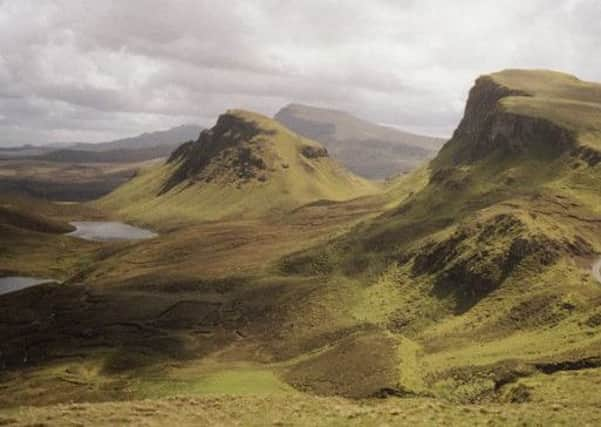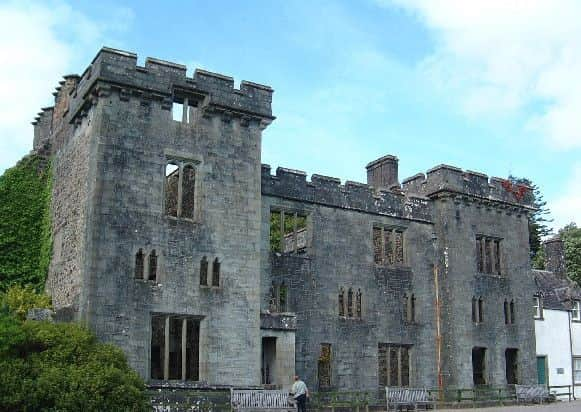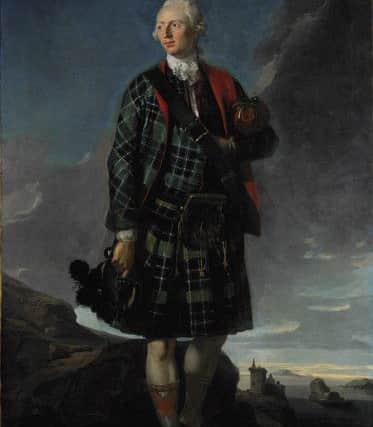The Hebridean '˜slaves' offered for £3 a head
This article contains affiliate links. We may earn a small commission on items purchased through this article, but that does not affect our editorial judgement.


A total of 96 men, women and children - about 20 of them between six and ten years old- were the human cargo of the ship William in 1739, the vessel to take them on the first leg of their journey to the colonies of the America.
But this boat was not to depart from the slave ports of West Africa - but instead from the Isle of Skye after a plot was hatched by Sir Norman Macleod of Berneray to “violently” remove people from their homes.
Advertisement
Hide AdAdvertisement
Hide AdThe boat shipwrecked off Donaghadee, County Down, after a storm pushed the William onto the rocks with those on board rounded up by the authorities.


The episode was to become known as Soitheach na Daoine, or Ship of the People, as Ulster magistrates became aware of the plight of the islanders - and the plot to send them across the Atlantic.
A letter from a Luke St Lawrence of Donaghadee to Alex Cunnigham, the Scots collector at Port Patrick, written just days after the shipwreck, sheds light on the affair executed by Norman Macleod, son of Donald Macleod of Berneray, and William Davison, the ship’s master.
The letter states of Macleod: “He was to pay five pounds for each of their freight to America as he and Davison said but he offered them to sale here for three pounds each.


Advertisement
Hide AdAdvertisement
Hide AdHe added: “I am sorry your country is so hard set for money that they are fallen on the Guinea trade.”
The term ‘Guinea trade’ was used in the past to reference the slave trade.
However, Dr David Alstor, an expert in the links between the Highlands and the slave trade, said those on board the William would be sold into indentured labour as opposed to slavery.
Several landowners of Skye have been long been implicated in the dark episode of the Vessel of the Men.


Advertisement
Hide AdAdvertisement
Hide AdKey characters, including Sir Alexander MacDonald, 9th Baronet of Sleat, long denied their role in the plot to forcibly move innocent islanders, some from Harris, under the pretence they were a “parcel of convicts for transportation.”
However, the true nature of the William’s voyage soon became apparent to those in Ulster.
In St Lawrence’s letter, he details how Macleod “let them into the secret” that he had the consent of all the lairds of Skye “to take them away as many men, women and children as he could provide shipping for and carry them to America or we suppose where else he pleased,”
MacLeod carried with him a list of those he claimed had been “convicted at their courts” but St Lawrence said passengers had been “taken out of their beds or from about their labour, not one person in confinement or even tried before any court of judicature.”


Advertisement
Hide AdAdvertisement
Hide AdIt was impossible that the children on board could be found guilty of capital crimes, he added.
The letter continues that it was “all agreed” that those on board were “forced out of their country contrary to the law of all Christian nations.”
Macleod and Davison made their escape with warrants issued against them by the local judiciary.
Macleod later fled to the Netherlands.
The islanders scatters after being freed by magistrates with around 40 of the islanders settled close to Donaghdee. Some eventually managing to make the journey back to Skye.
Advertisement
Hide AdAdvertisement
Hide AdFollowing news of the shipwreck, Lord MacDonald set to work vehemently denying his role in the Williams’ voyage.
A series of letters, all held by the Cland Donald archive on Skye, shows how he had been involved in shipping around 70 thieves from Skye in previous years.
But he claims Macleod had falsified his role in the William affair.
In letters to a John MacKezie, dated 1739, he defends himself from having any concern in “that villainous attempt.”
Advertisement
Hide AdAdvertisement
Hide AdHe added: “Macleod and I are mention’d in letters sent to Ireland as the persons who were to furnish the unhappy cargo of that ship.
“I can scarce believe Berneray was capable of writing so.”
A further letter adds “I never was so angry at myself as about this matter and I must regret my folly as long as I have my sences. (sic).
Dr Alstor described the William’s voyage as a “disturbing” episode of exploitation of vulnerable people.
He added: “Even as early as this, it shows how landowners could treat their tenants. It blows out the water romantic notion about the clan chief and his people.”
•
DOWNLOAD THE SCOTSMAN APP ON ITUNES OR GOOGLE PLAY